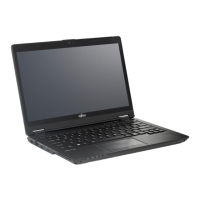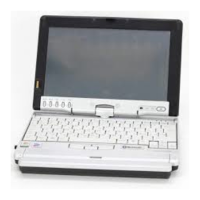Power Sources
33
When you Power On your LifeBook notebook, it
will perform a Power On Self Test (POST) to
check the internal parts and configuration. If an
error is found, your LifeBook notebook will emit
an audio warning and/or an error message will
be displayed.
After satisfactory completion of the Power On Self
Test (POST), your notebook will load the
operating system.
Power Off
Power/Suspend/Resume Button
Before turning off the power, check that the Hard
Disk drive/ Optical Disk drive Access indicator is
OFF. If you turn off the power while the notebook
is accessing the hard disk or optical disk, data
may be lost. To shut down the notebook without
error, please use the Windows shut down
procedure.
Remember to close all files, exit all
applications, and shut down your operating
system prior to turning off the power using the
power switch. If documents are open when
you turn off the power, you will lose data that
have not been saved, and may cause disk
errors.
Remember to use the correct procedure to shut
down your notebook. The proper sequence is:
1. Click the start menu, and then click turn off
notebook button.
2. Click on the Turn Off button within the turn
off notebook dialog box.
3. The notebook automatically begins to shut
down.
When you turn on your LifeBook be sure you
have a power source. This means that at
least one battery is installed and charged,
or that the AC adapter is connected and has
power.
Do not carry your notebook around when it
is still power on. Do not subject your
notebook to shocks or vibrations. These may
damage your notebook.
Power button
Power On
Suspend/Resume/Power On Button
The Suspend/Resume/Power On button is used
to turn on your LifeBook notebook from its off
state. Once you have connected your AC adapter
or charged the internal Lithium ion Battery, you
can power on your notebook.
Press the Suspend/Resume/Power On button.
When you have finished working on the
notebook, you can either leave it in Suspend
mode, or you can turn it off.

